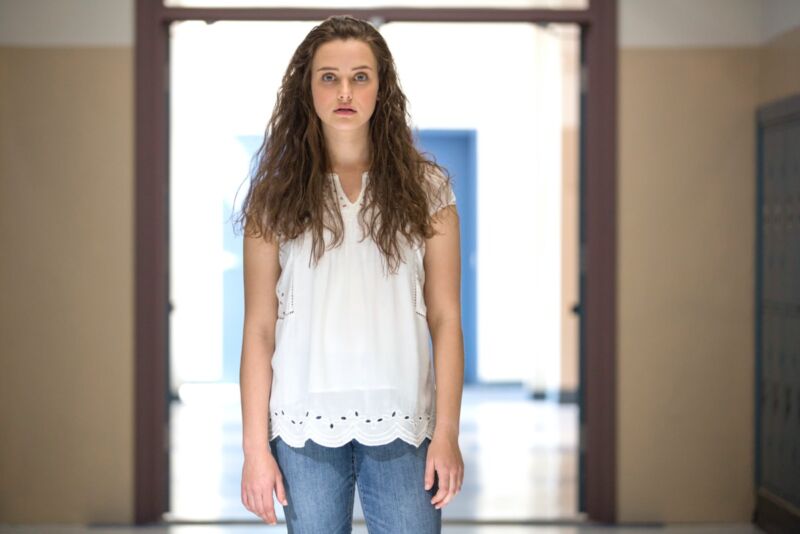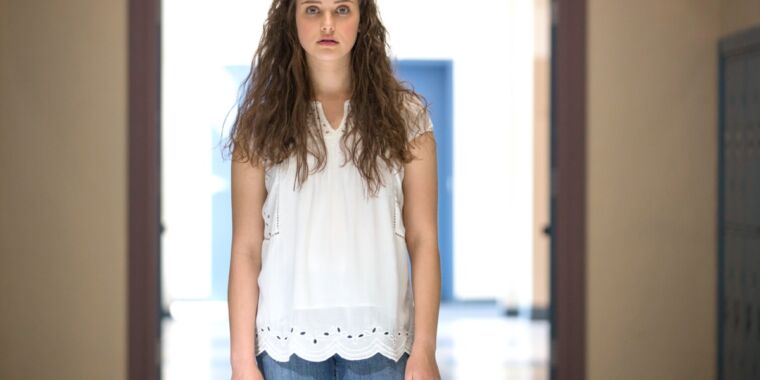
Netflix
The controversial 2017 Netflix series 13 Reasons Why sparked years of contradictory academic studies on whether the show sparked a rise in teen suicides (suicide contagion, or copycat suicides). Some showed negative impacts, while others found beneficial impacts. The most damning study appeared in 2019, which reported a sharp increase in suicide rates among young people between the ages of 10 and 17 in the months after the first season’s release—although it stopped short of finding a direct causal link between the two. In response, the streaming service edited out the original graphic three-minute bathtub suicide scene that ignited the controversy.
But Dan Romer, a psychologist at the University of Pennsylvania’s Annenberg Public Policy Center who studies media and social influences on adolescent health, was skeptical about that 2019 study. His latest paper on the subject, published in the journal Suicide and Life-Threatening Behavior, found a seasonal pattern to teen suicide rates that seems to coincide with the school year, declining in the summer months. Taking this and other factors into account effectively eliminated the contagion effect reported in the 2019 paper. (For an in-depth look at the controversy and an overview of several of those studies, see my 2021 feature.)
As I’ve written previously, suicide contagion is a phenomenon in which exposure to suicide within a family, among friends, or through the media may be associated with increased suicidal behavior. There have been many studies over the years on suicide contagion—sometimes called the “Werther effect,” after the young protagonist of Johann Wolfgang von Goethe’s 1774 novel, The Sorrows of Young Werther. However, the extent to which fictional portrayals of suicide may contribute to suicide contagion remains a matter of genuine academic debate.
Within weeks of 13 Reasons Why‘s debut on March 31, 2017, mental health professionals began voicing strong objections to the young adult-targeted show, believing the depiction could trigger suicidal thoughts or actions in vulnerable teens. Many expressed concerns that the show glamorized suicide and violated current journalistic guidelines for responsible reporting on suicide. In April 2017, the National Association of School Psychologists released a statement warning about the potential adverse effects of the series, and the organization also sent a letter to school mental health professionals—the first time it has undertaken such an action.
The 2019 study by Jeffrey Bridge of Ohio State University and several other colleagues analyzed the Centers for Disease Control and Prevention’s data on deaths due to suicide for people between 10 and 64 during the period from January 1, 2013, to December 31, 2017. While they found a 28.9 percent increase, there was a statistically significant increase in suicide rates for boys, but the increase for girls was not statistically significant—counter to the authors’ original hypothesis that the show’s release would have a larger impact on girls than boys.
Romer conducted his own 2019 study in real time as the second season was about to air. (That season dealt with the aftermath of everything that occurred in season one). Those results showed some evidence for beneficial effects, even among some of the more vulnerable viewers. Noting that the findings of Bridge et al. contradicted what we know thus far about suicide contagion, he re-analyzed the same CDC data. Romer thought that the evidence for contagion should have been stronger for girls than boys, given that the show’s suicidal teen protagonist was female.








